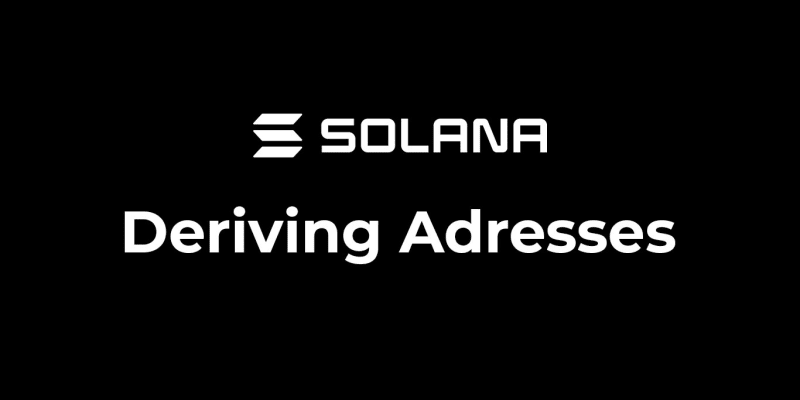Every public address on the Solana blockchain uses a string of characters between 32 and 44 characters long. Each of these address follow the BIP44 standard and therefore use the base-58 character set.
These seemingly random string of letters and numbers are known as your "Public Key" (or pubkey for short), and are the addresses that people can share freely across the internet. It's your "wallet address".
These public address have a very specific set of one-way relationships that prevent any derived address from computing the secret that derived itself. Hence one-way. This one way relationship is one of the core fundamentals of most cryptography and all blockchains.
It is how us common folk on the internet can have true digital ownership and provenance.
Base-58 character set
Solana public addresses and transactions function on the base-58 character set. Essentially meaning, there are only 58 possible characters:
- including uppercase A-Z, excluding uppercase
OandI(as inOscarandIndia) - lowercase letters A-Z, excluding lowercase
l(as inletter) - digits 1-9, (which does NOT include
0)
These specific letters are excluded from the base-58 character set since they can very easily be mistaken for other characters. And if the wrong character is used, then the blockchain address is completely different!
How are Solana addresses derived?
mnemonic phase -> private key -> public key (aka your wallet's address)
For most people (not programs) the process to get a public address on the blockchain involved installing a web based "browser wallet" like Phantom or Solflare. Which then will generate a random list of words called your "mnemonic phrase" which is then used to derive (or compute ) a public address, in the form of one-way cryptography.
Below I will break down each of these steps:
Mnemonic phrases
Public addresses on the Solana blockchain are most commonly derived from a mnemonic phrase.
For most people, they will commonly use a mnemonic phrase that is a randomly generated list of words and is usually 12 or 24 words longs. For Solana, this phrase contains very specific words from the BIP39 wordlist.
The very specific combination of these words AND their specific order will allow the blockchain to "derive" (or "compute" ) a Private key using the Ed25519 algorithm. This private key can then be used to derive a public key, giving us a keypair (aka combination of a Private key and a Public key.)
In theory, the mnemonic phrase is used to essentially makes it easier for a human to read than a random string of characters, like a Private key. Thus making it easier for a human to write down this phrase, without mistakes , than a random character string.
Private keys
The derived Private key (or "secret key") is the special key that is the ONLY key that will be able to sign a transaction for its corresponding Public key, and therefore prove it own the public address.
A private key can always derive it's "child" public keys (and yes that is multiple, more on that in a moment), but a public key cannot derive its private key.
Derivation path
One of the most commonly misunderstood portion of generating a blockchains addresses is the derivation path. This special piece of information is what allows a single Private key to derive multiple Public keys that are impossible to tell they came from the same Private key. Only the owner of the Private key can tell.
These derivation paths are essentially a sequence that looks like this:
Sequence: m/<PURPOSE>/<COIN_TYPE>/<ACCOUNT>/<CHANGE>
- each section is separated by a single
/ -
mnotes the root or "master" key - each of the other elements after
mshould be a zero or positive integer - each element may also end in a single
', noting it is "hardened"- you can read more here about it, but it is not really necessary
- just know that Solana uses hardened elements and will enforce this automatically, regardless of if the
's are included.
With only specifying a derivation path of the m/<PURPOSE>/<COIN_TYPE>, like the one used by the Solana CLI, only the "root key" can be derived. Specifying the <ACCOUNT>/<CHANGE> will enable deriving multiple Public keys from the same Private key.
You can learn more about about the CLI with this guide on how to use the Solana CLI
Derivation paths on Solana
The "standard" derivation paths used on the Solana blockchain are:
-
m/44'/501'used by the Solana CLI to generate a "root key", and -
m/44'/501'/0'/0'used by most web based or browser based wallets (like Phantom and Solflare)
These Solana derivation paths segments basically mean this:
-
44'- (required) uses the BIP44 standard -
501'- (required) the identifier for coin type of the Solana blockchain -
0'- (optional) define the account ID to derive. This is the value that browser wallets (like Phantom and Solflare) will change to enable users to generate new Public addresses on the fly, all while still using their single mnemonic phrase. -
0'- (optional) an additional number that is basically always set to0for addresses that will be public
Public keys and wallet addresses
The Public key (aka pubkey) that is derived from a private key, using derivation path, is the public address that people have come to know as their "wallet address". This address will allow anyone on the blockchain to transfer tokens or otherwise interact with their account, securely.
Vanity addresses
Normally, a public Solana address appears as a random string of letters and numbers (like discussed above). But, there is a common technique used to try to generate addresses that start with certain characters in a row (like a word). These addresses are called Vanity Addresses.



Top comments (0)